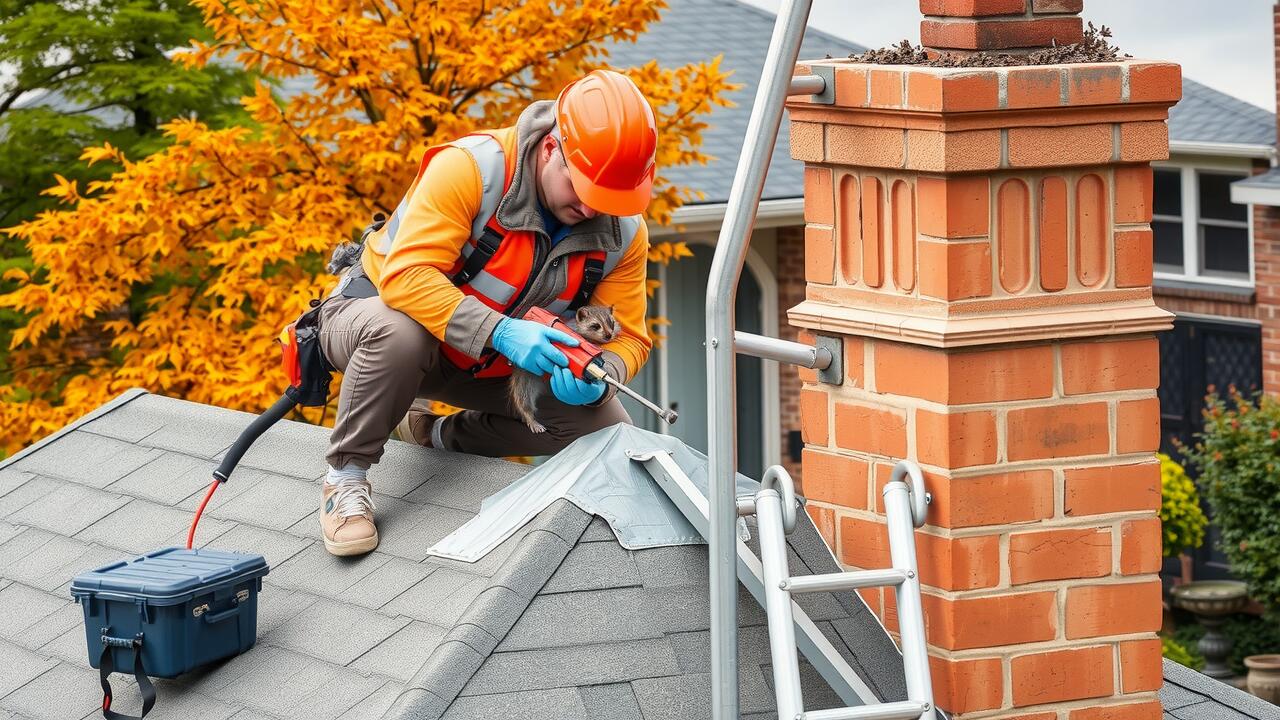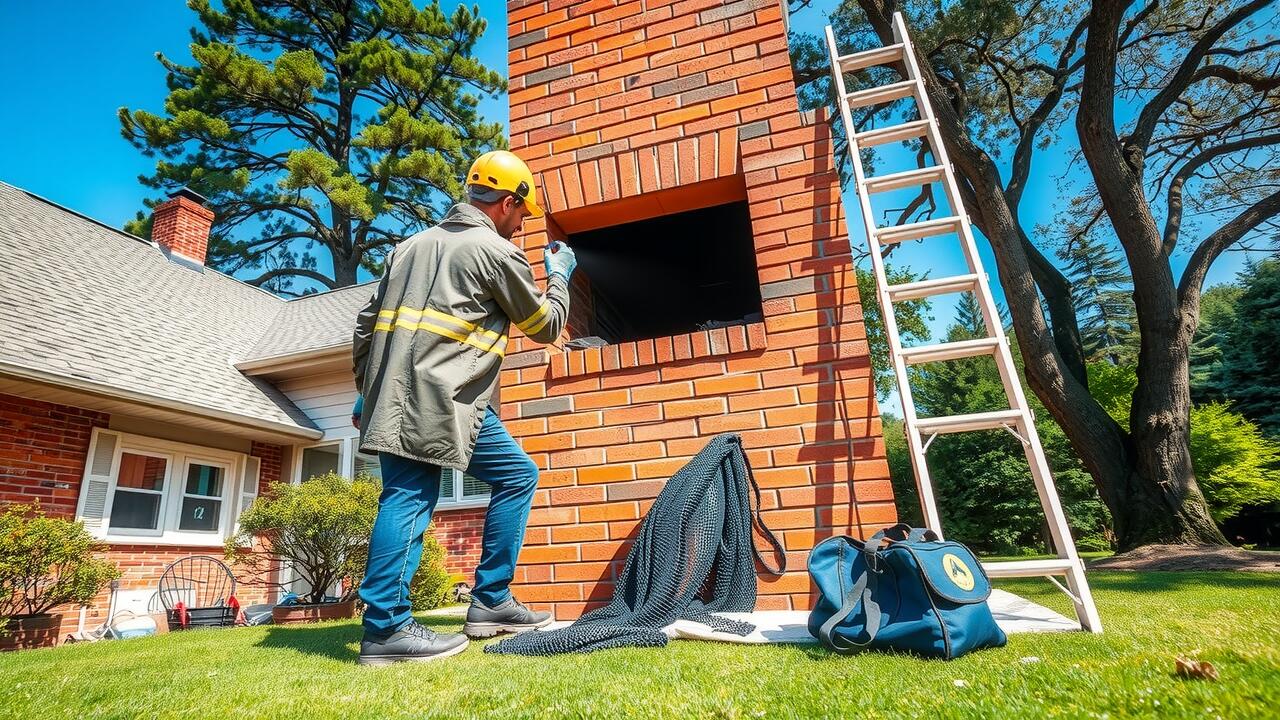Table Of Contents
How to Safely Remove an Animal
If you suspect that an animal has made its way into your chimney, ensure you prioritize safety before taking any action. Start by determining the size of the animal; this will inform the appropriate removal strategy. Securing the area is crucial to prevent the animal from escaping into your home. Prepare your supplies, including protective gloves, a flashlight, and a sturdy container, to facilitate the removal process. If you encounter any signs of a struggle or aggression from the animal, backing away is the best course of action.
Using humane traps can be an effective way to remove the animal. Position the trap according to the characteristics of the chimney and the animal’s typical behavior. Monitor the trap frequently to minimize stress on the trapped animal. If the situation seems complicated or dangerous, searching for “Chimney Animal Removal near me” can connect you with professionals who have the proper equipment and experience to handle the situation safely and effectively. This ensures both your safety and the humane treatment of the animal.
Step-by-Step Instructions for DIY Removal
Before attempting to remove an animal from your chimney, ensure you have the right tools on hand. Start by donning protective gloves and a mask to safeguard yourself from any potential hazards. Close off any openings leading into your living space to prevent the animal from escaping indoors. Once prepared, gently tap the side of the chimney to encourage the animal to move towards the top. Be patient and listen for any sounds to ascertain its location.
If the animal remains in the chimney after your attempts, it may be necessary to create a safe exit route. This can be done by using a lightweight rope to lower a suitable container, like a small box, into the flue. The goal is to coax the animal into the box without causing harm. If this approach fails or you feel uncomfortable, searching for “Chimney Animal Removal near me” can connect you with professionals who specialize in humane animal extraction.
When to Call Professional Help
If you hear unusual noises coming from your chimney and notice other signs such as droppings or nesting materials, it may be time to consider professional help. Wild animals can pose risks not only to your home but also to your family’s safety. Professionals have the tools and expertise to remove the animal while ensuring the chimney remains intact and free of damage.
Searching for “Chimney Animal Removal near me” can connect you with local experts who specialize in safely handling chimney invasions. These specialists can assess the situation more accurately than a DIY attempt. They can also address any underlying issues that may have led to the animal’s entry, preventing future problems.
Signs That Indicate You Need Expert Assistance
If you hear persistent rustling or scratching sounds coming from your chimney, it is a clear indication that something may be stuck, trapped, or trying to find its way out. Additionally, if these sounds occur during the day when most animals are typically active, that may suggest a larger issue at hand. Ignoring these signs might lead to further complications, including potential damage to your chimney or harm to the animal. In such cases, seeking professional help becomes a necessity.
Signs of distress from pets in your home can also signal the need for expert assistance. If your dog or cat becomes excessively agitated or barks at the chimney area, it may indicate the presence of an animal. Rather than risking injury to yourself or the animal, it’s safe to contact services for Chimney Animal Removal near me. Experts can assess the situation and safely remove the animal while ensuring your home remains free from unwelcome guests in the future.
Preventing Future Invaders
To keep unwanted animals from invading your chimney, consider installing a sturdy chimney cap. These caps provide a barrier that prevents critters like squirrels, raccoons, and birds from entering your flue. Ensure the cap fits securely and is made of durable materials to withstand harsh weather conditions. Regular inspections will help identify any potential issues before they become serious problems.
Routine chimney maintenance is also essential in preventing future invaders. Schedule cleanings to remove soot build-up, which can attract animals. Regularly check for gaps or cracks in the chimney structure. If you’re concerned about ongoing problems or uncertain about the condition of your chimney, searching for “Chimney Animal Removal near me” can connect you with professionals who can assist in safeguarding your home and keeping wildlife at bay.
Effective Chimney Covers and Maintenance Tips
Installing effective chimney covers can significantly reduce the risk of animals entering your chimney. A sturdy cap prevents various creatures, such as birds and raccoons, from nesting inside. Additionally, selecting a cover made of durable, rust-resistant materials ensures long-lasting protection. Proper sizing is essential; a well-fitted cover leaves no gaps for intruders while still allowing for efficient airflow.
Regular maintenance is crucial for keeping your chimney safe from unwanted visitors. Routine inspections help identify signs of wear or damage, ensuring that your chimney remains in top shape. If you experience issues despite preventive measures, searching for “Chimney Animal Removal near me” will connect you with local professionals who can help address the problem swiftly and safely.
FAQS
What should I do first if I hear an animal in my chimney?
The first step is to stay calm and avoid panicking. Do not try to remove the animal yourself right away. Instead, listen closely to determine if the noise is consistent, as this may indicate the presence of a trapped animal.
Is it safe to try and remove the animal myself?
DIY removal can be risky, especially if you’re not familiar with handling wildlife. Many animals can be dangerous when threatened. It’s advisable to follow proper safety protocols or call a professional if you’re unsure.
What signs should I look for to determine if I need professional help?
Signs that indicate you may need expert assistance include persistent noises, signs of distress from the animal, or if you suspect the animal might be injured. Additionally, if you see droppings or other signs of habitation, it’s best to call a professional.
How can I prevent animals from entering my chimney in the future?
To prevent future invasions, consider installing a chimney cap or cover, regularly maintaining your chimney, and ensuring that there are no gaps or openings that could allow access to wildlife.
What types of animals are commonly found in chimneys?
Common animals that may seek shelter in chimneys include raccoons, squirrels, birds, and bats. Each requires different approaches for removal and prevention.

